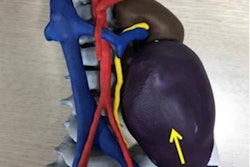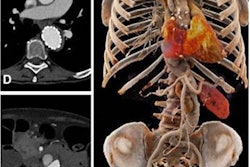Dear AuntMinnie CT Insider,
The early months of the COVID-19 pandemic depressed the rate of low-dose CT lung cancer screening, and although rates rallied over the summer of 2020, they have remained inconsistent. In this edition's Insider Exclusive, we're highlighting new research published in JAMA Network Open that describes how COVID-19 affected lung cancer screening -- and how the trend could be bad news for patients.
When you've finished reading our exclusive, check out our recent coverage of other CT research, including a study that compared the efficacy of 3D printed models of retroperitoneal cancer to CT imaging for staging surgery for the disease in children; how photon-counting CT appears to reduce the amount of contrast needed for coronary CT angiography by 25%; and how combining CT results with an artificial intelligence algorithm helps clinicians assess diabetic patients' coronary artery disease risk.
CT can help researchers learn more about ancient civilizations. Take a look at our story about a team from Cairo University in Egypt that "digitally unwrapped" a 2,300-year-old mummy of a teenager who was garlanded with ferns and adorned with 49 amulets that his family hoped would help him negotiate the journey into the afterlife.
Finally, check out the following articles:
- Learn about the use of CT for guiding percutaneous soft tissue and bone mass biopsies in children.
- See how community health advisors improve low-dose CT lung cancer screening rates.
- Coronary CT angiography can improve coronary artery disease outcomes by reducing hospitalizations for heart attacks and mortality rates.
- Find out how preoperative contrast-enhanced conebeam breast CT could be more accurate than MRI in assessing residual breast tumors after breast cancer treatment.
CT is a powerful and versatile imaging technology. We invite you to keep current on its many uses by visiting the CT Community regularly, and if you have CT-related topics you'd like us to consider, please contact me.





















